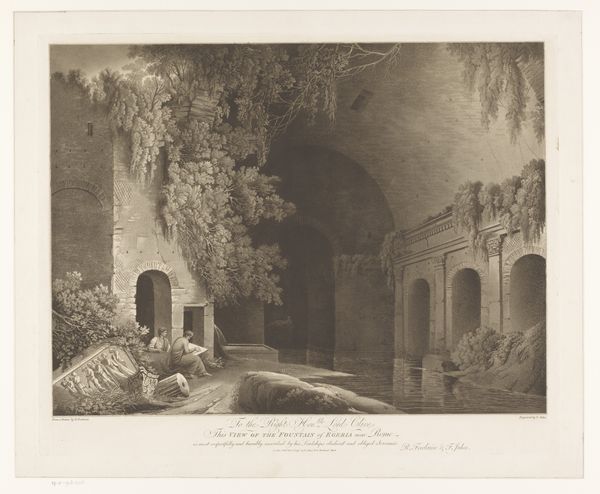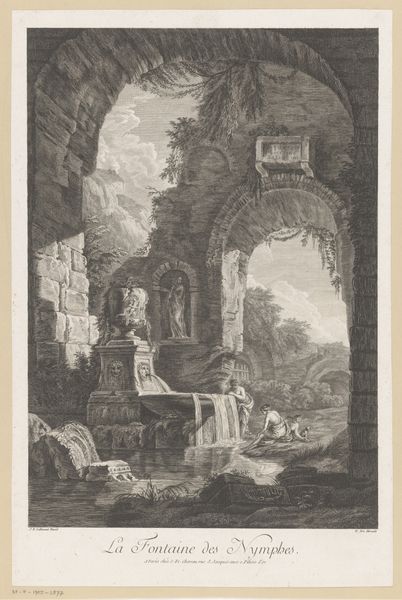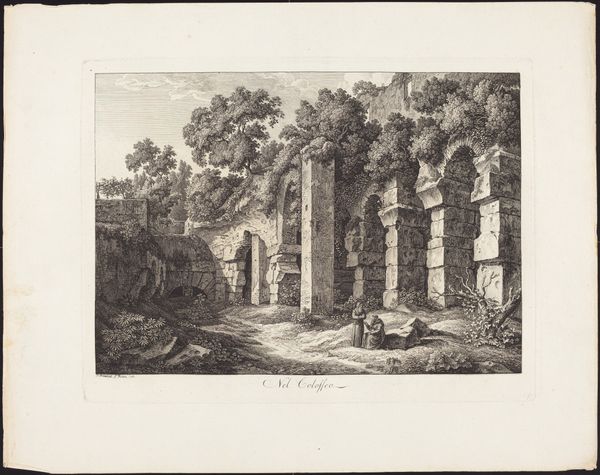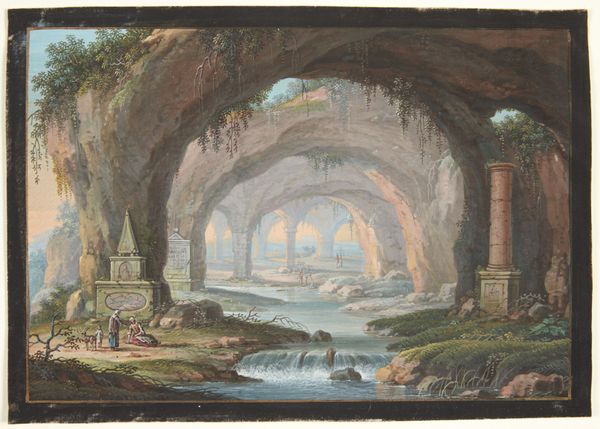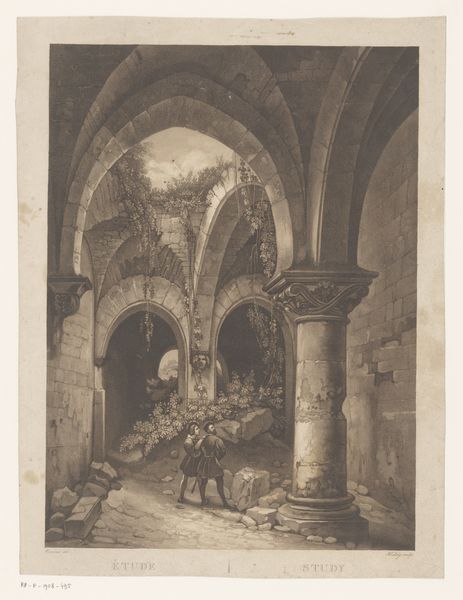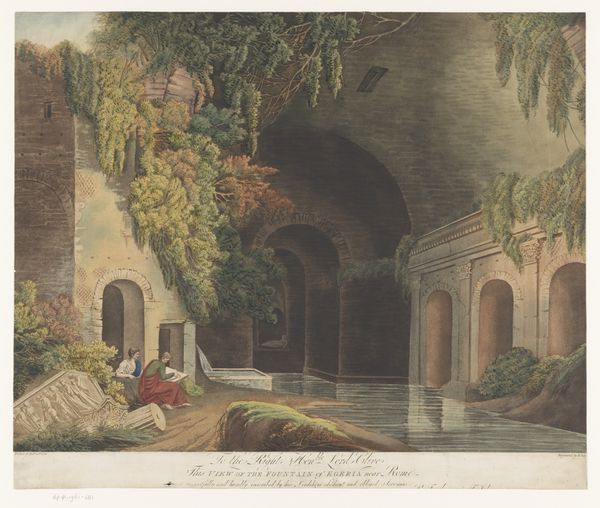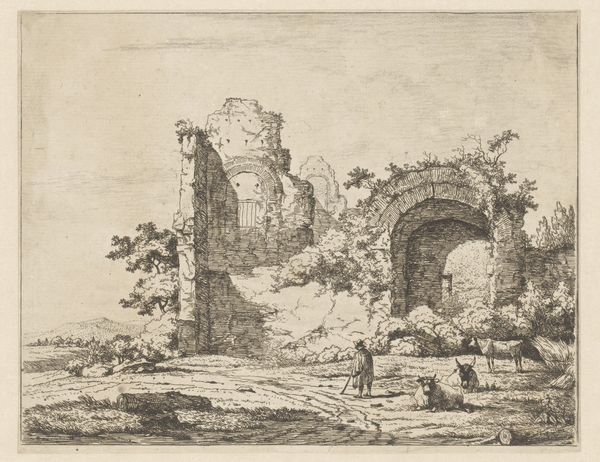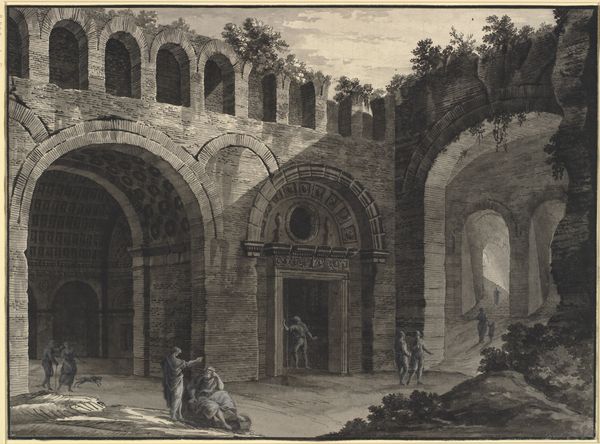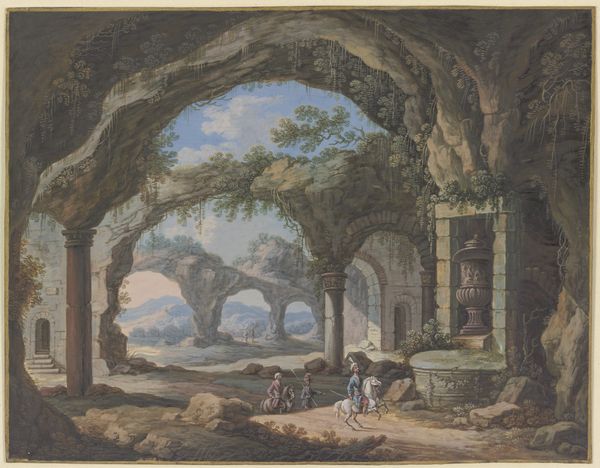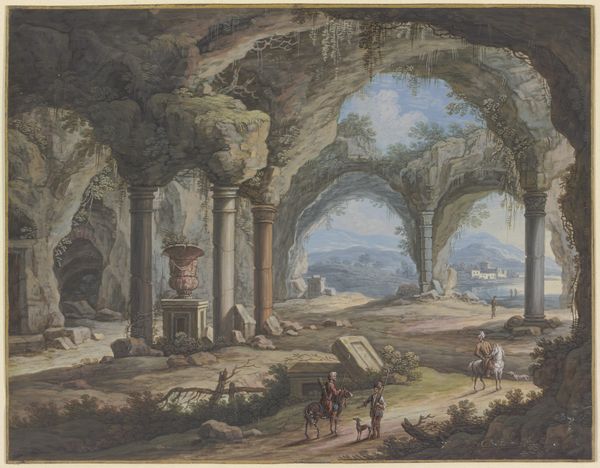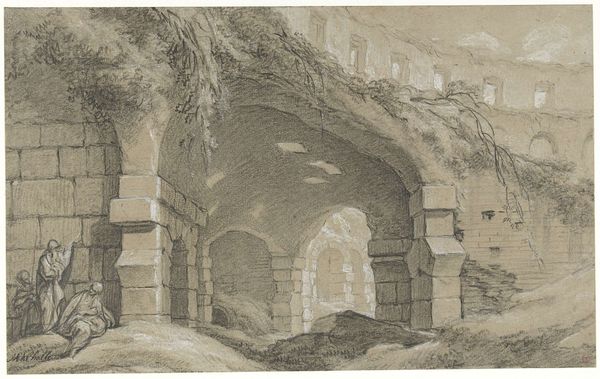
drawing, coloured-pencil, paper, ink, architecture
#
drawing
#
coloured-pencil
#
landscape
#
paper
#
ink
#
coloured pencil
#
classicism
#
15_18th-century
#
watercolor
#
architecture
Copyright: Public Domain
Curator: This drawing, rendered with ink and colored pencil, is entitled "Römische Ruinenhalle_ die Konstantinsbasilika," or "Roman Ruins Hall: The Constantine Basilica," created in 1788 by Maximilian von Verschaffelt. It now resides here in the Städel Museum. Editor: My initial sense is one of ghostly grandeur. It’s a muted palette—almost sepia-toned—yet it evokes such a potent sense of faded glory. It feels like staring into the very bones of history… if history had bones, that is. Curator: That's beautifully put. Von Verschaffelt, working within the late 18th century classicism, wasn’t merely documenting ruins; he was participating in a larger cultural fascination with antiquity. Notice how the basilica is not just depicted, but reimagined as a kind of picturesque landscape. Editor: Exactly! There's an undeniable romanticism in the way nature reclaims the space, with vegetation creeping through the architecture. I imagine Von Verschaffelt pondering the cyclical nature of empires. A lot of time has passed, but that can easily relate to today. The person in the bottom corner – what do you make of that character's placement and activity? Curator: Indeed. The lone figure at the bottom corner invites contemplation on human insignificance against the backdrop of time and monumental ruins. Their posture – reclining amidst such architectural might – offers a powerful contrast. Editor: Right? It is an incredibly human touch – to lounge around even when faced with something so grand. As though to say, "Even in ruins, life finds a way...to nap!" I wonder what the Basilica would say about it if walls could talk. Curator: A good question. I see in this drawing a blend of precision and evocative interpretation, where architectural detail serves to enhance a deeply emotional atmosphere. A testament, really, to enduring human fascination with past grandeur and inevitable decline. Editor: It truly is. It speaks to both the beauty and melancholy inherent in the passage of time... and maybe, just maybe, the importance of a good nap, no matter what century you're in.
Comments
No comments
Be the first to comment and join the conversation on the ultimate creative platform.

